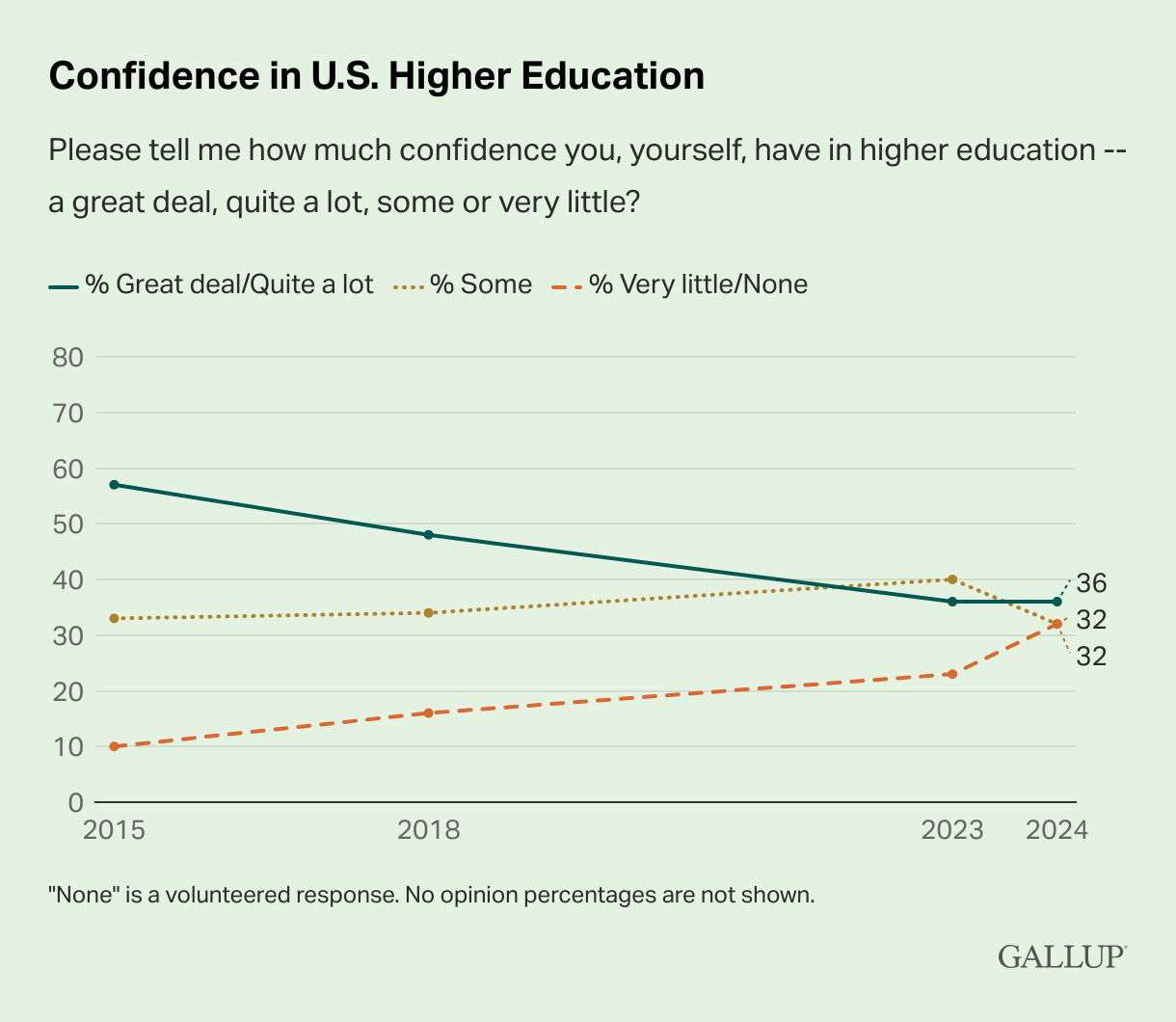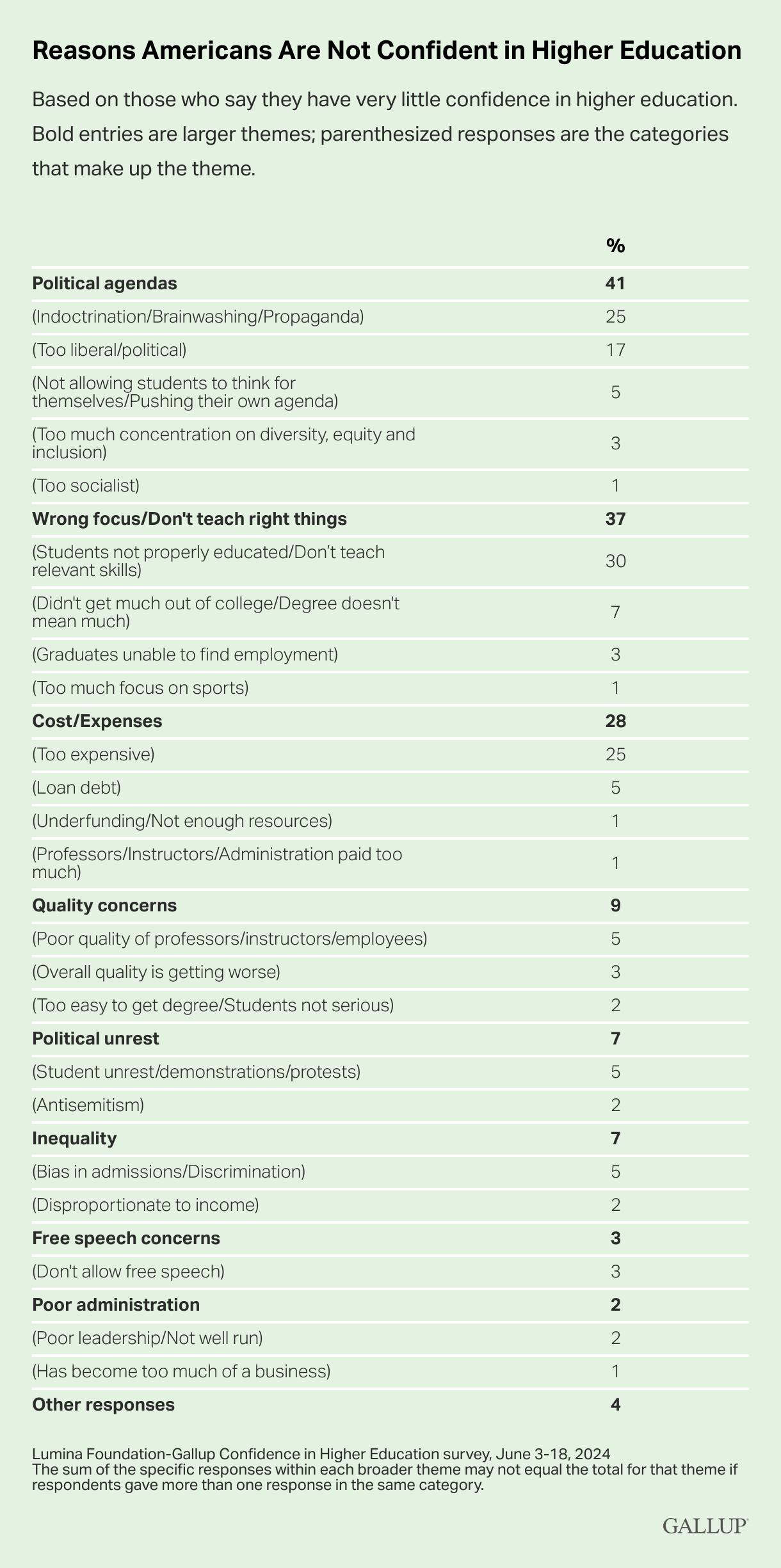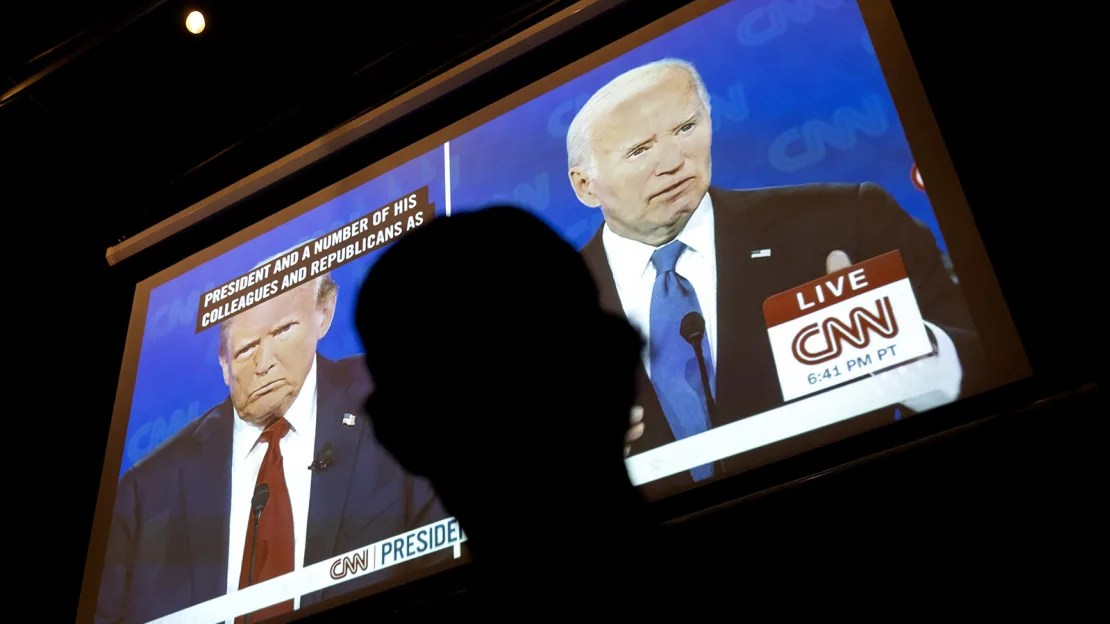How might a likely second Trump administration impact higher education? How can academics plan for and anticipate that major event, should it occur?
This week we continue our reading of Project 2025, a key document in understanding the near- and medium-term future of American politics. This is an online, open, and distributed reading and anyone can participate. Here’s a post explaining how it works. You can find all of our Project 2025 posts here.
Before we start, I wanted to thank John Warner for writing positively about our reading at Inside Higher Ed. Welcome, new readers!
In today’s post I’ll summarize this week’s reading, which is the section called “The Common Defense” in pages 87-199. I’ll draw out the bits which bear directly on higher education. Next I’ll add some reflections and then several discussion questions. At the end I’ll add some more resources. Please join in with comments below – for examples of that, you can see good comments at the end of our first post.
Summary overview
With this section the book turns to three major government agencies, the Departments of Defense, State, and Homeland Security, with an eye towards overhauling them.
In the first chapter former Acting Secretary of Defense Christopher Miller criticizes the DoD with being too concerned with equity and vaccines. Instead, he wants it to focus on deterring Chinese aggression against Taiwan and other east Asian US allies, above all other potential threats. Proposals include modernizing and expanding America’s nuclear might, speeding and growing domestic war material production, improving recruitment outcomes, using AI in intelligence gathering, and reforming cyber capabilities in response to the Ukraine war experience. The Army should grow by 50,000 soldiers and the Navy to beyond 355 ships. The Space Force should have offensive as well as defensive capabilities. Irregular warfare should become more important. Lastly, the US should invest more in homeland and overseas missile defense.
 The second chapter in this section concerns the Department of Homeland Security, and the author, Virginia politician Ken Cuccinelli, was once its deputy. He sees the department now as “bloated, bureaucratic, and expensive” and wants to break the whole thing up, distributing its functions to other units while privatizing the Transportation Security Administration (TSA) and federal flood insurance. This chapter fits the Project 2025’s argument by urging more political appointees across the units picking up DHS services, as well as by calling for a stronger crackdown on illegal immigration. There is a great deal of detail about adjusting multiple agencies’ operations, from retraining certain staff to reporting lines, funding streams, closing units, and altering myriad policies.
The second chapter in this section concerns the Department of Homeland Security, and the author, Virginia politician Ken Cuccinelli, was once its deputy. He sees the department now as “bloated, bureaucratic, and expensive” and wants to break the whole thing up, distributing its functions to other units while privatizing the Transportation Security Administration (TSA) and federal flood insurance. This chapter fits the Project 2025’s argument by urging more political appointees across the units picking up DHS services, as well as by calling for a stronger crackdown on illegal immigration. There is a great deal of detail about adjusting multiple agencies’ operations, from retraining certain staff to reporting lines, funding streams, closing units, and altering myriad policies.
The third “Common Defense” chapter, written by Kiron K. Skinner, focuses on the State Department, where Skinner worked during the first Trump administration. The author envisions a reduced department more closely aligned with a conservative president’s goals. State should cut back its international agreements and instead refer those to formal, Senate-supervised treaties. (174-5) State should cut back involvement with international organizations which, basically, do not support conservative goals, taking a “tough love” approach. (190-3) Overall, Skinner wants State to also join the immigration crackdown by withholding visas and reducing refugee admissions.
Skinner then gives the reader a global tour of new policies. As per the rest of Project 2025, this chapter wants State to focus on China as the leading global threat to America, yet it also targets Iran, North Korea, Russia, and Venezuela (179-183, 185). Mexico joins that list as a source of drug imports and state collapse. Further south, the chapter calls for a new government to re-source outsourced industries to Latin American, or “Re-hemisphering” them. The United States should expand its African efforts, shifting from humanitarian aid to business development in order to compete with Chinese ambitions. The Quad (Australia, India, Japan, America) should anchor United States south and east Asian policies. To the north, Skinner wants to redirect NATO, the US Navy, and Coast Guard to assist in expanding American economic development of the Arctic (188-9).
What does this mean for higher education? While the three “The Common Defense” chapters don’t deeply bear on colleges and universities, there are several touches worth noting. The discussion on military acquisition improvements wants to spread functions the Defense Acquisition University (DAU) now has to “include accreditation of non-DOD institutions.” (98) This might include civilian institutions. Similarly, the push for more military innovation names “communities” that surely include some universities. That discussion also includes some vague language about universities supporting American but not Chinese research and development. (100) The idea of improving recruiting includes more recruitment efforts and even military testing in high schools, which could impact the flow of those students to post-secondary schooling. (102-3)
There is also a call to reform post-secondary military education, asking a new government to “[a]udit the course offerings at military academies to remove Marxist indoctrination, eliminate tenure for academic professionals, and apply the same rules to instructors that are applied to other DOD contracting personnel.” (104) Along this line is the idea of launching a Space Force Academy:
to attract top aero–astro students, engineers, and scientists and develop astronauts. The academy could be attached initially to a large existing research university like the California Institute of Technology or MIT, share faculty and funding, and eventually be built separately to be on par with the other service academies. (119)
The Homeland Security section targets international students, wanting to reduce some of their numbers:
Prioritize national security in the Student and Exchange Visitor Program (SEVP). ICE should end its current cozy deference to educational institutions and remove security risks from the program. This requires working with the Department of State to eliminate or significantly reduce the number of visas issued to foreign students from enemy nations. (bold in original; 141)
The State Department chapter similarly has several implications for higher education. It calls on American campuses to assist its African policy: “The U.S. should support capable African military and security operations through the State Department and other federal agencies responsible for granting foreign military education, training, and security assistance.” (emphases added, 187) The call to show “tough love” to international organizations calls out several which have some engagement with American education, like UNESCO and WHO. Overall, the emphasis on reorganizing the foreign service and aligning it to conservative ideology has implications for faculty and staff who work with State, as well as students considering careers there.
Reflections
This section continues the theme of infusing a conservative ideology throughout government. Here this means a pro-family, anti-abortion, climate inaction, etc. approach through the military, Homeland Security, and diplomacy. We can see this in the Defense Department section. The introduction’s opposition to abortion and transgender rights finds support in this call to exclude them from the military:
individuals… with gender dysphoria should be expelled from military service…
the use of public monies for transgender surgeries or to facilitate abortion for servicemembers should be ended.
Similarly, we find this call to “[e]liminate Marxist indoctrination and divisive critical race theory programs and abolish newly established diversity, equity, and inclusion offices and staff.”
Academia doesn’t play as large a role in this section as it did in the first part of Project 2025. Colleges and universities don’t appear as antagonists. Instead, this week’s chapters see higher education playing an instrumental role in terms of training, reducing immigration, providing expertise, and so on. Looking ahead, if a second Trump administration implements these proposals, I wonder if we’ll see a rise in academic opposition to the military, as well as criticism of Homeland Security or whichever constellation of departments succeed it.
Questions
- How would the policy changes expressed in this week’s chapters impact your professional and personal lives?
- Do you see Trump as likely to attempt what this week’s reading describes?
- How might the world change if these global policies take effect?
- If you oppose what these three chapters call for, what opposition strategy and tactics would best resist it?
- Having read this far, what do you anticipate from the rest of the book?
Resources
- Nathan M Greenfield, “Project 2025 maps Trump’s ‘authoritarian agenda’ for HE”
- Flynn Nicholls, “Ex-Trump Administration Officials Involved in Project 2025: Full List”
- Michelle Nijhuis and Erin X. Wong, “Project 2025’s Extreme Vision for the West”
- Alex Walters, “Could George Mason U. Be Republicans’ ‘Test Case’ for Project 2025?”
…and that’s it for this week’s reading. For next Monday, August 5th, we will read further into “The Common Defense” and then “The General Welfare,” which means pages 201-318.
Please do comment in the boxes below this post. If you’d prefer to share your reactions on other platforms, tag me or otherwise let me know about those comments so I can include them in our next post. If you want to respond but are worried about what people could make of your reactions, feel free to contact me here without the web knowing.
Comment away! And on to the next tranche of Project 2025.
(thanks to many people, including Mark Corbett Wilson)

 To explain with a bit of personal history: for the first 50 years of my life I enjoyed superb eyesight. Tests reliably showed 50-50 vision (20-20 in Britain). Years and years of intensive and extensive reading didn’t stress my eyes – which was strange. Everyone in my family wore glasses except me. It was weird but nice.
To explain with a bit of personal history: for the first 50 years of my life I enjoyed superb eyesight. Tests reliably showed 50-50 vision (20-20 in Britain). Years and years of intensive and extensive reading didn’t stress my eyes – which was strange. Everyone in my family wore glasses except me. It was weird but nice.













